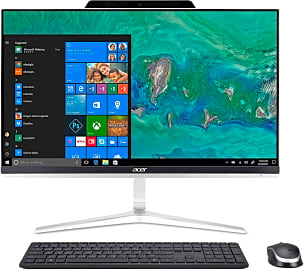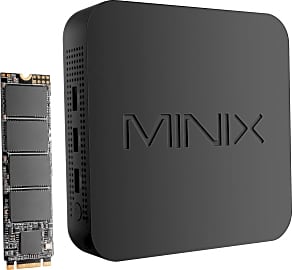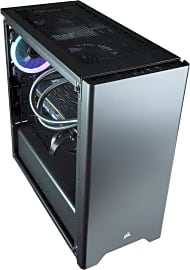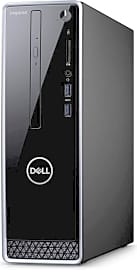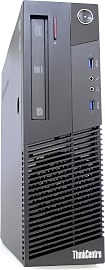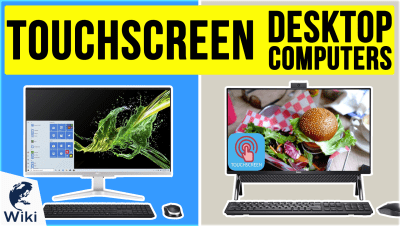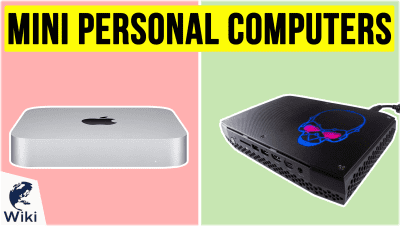The 8 Best Desktop Computers

This wiki has been updated 41 times since it was first published in March of 2015. Although computing devices continue to get smaller, many people require the speed that only a larger and more powerful unit can deliver. If you're an avid gamer or graphic designer, or you work with memory-intensive audio and video files, you'll benefit from the most advanced hardware. One of these new desktop computers will ensure the smooth operation of all your applications. When users buy our independently chosen editorial picks, we may earn commissions to help fund the Wiki.
Editor's Notes
July 29, 2021:
We're still relatively happy with our previous selection, and a good handful of those same models have been updated and re-released since our last Wiki update. The Asus ROG Strix GA15DK is our sole brand new addition thanks to its powerful components and mid-range price. Otherwise, we continue to recommend the refreshed Acer Aspire TC Series and Apple Mac Mini, the latter of which is especially notable because of the powerful M1 processor developed in-house by Apple.
July 12, 2020:
You can spend just about as little or as much as you want on a desktop PC. On the inexpensive side, it's tough to beat the Lenovo ThinkCentre M93P; yes, its CPU is several generations old at this point, but its 4th-gen quad-core Intel i5 is still definitely powerful enough to satisfy those who aren't power users. In fact, with a 256-gigabyte solid-state drive, it's considerably faster than a majority of computers of the same age and form factor.
The Asus Chromebox 3 is another reasonably priced model that comes in a few performance tiers, and even the less powerful versions are quite capable of providing a fast and user-friendly experience on Chrome OS. The Apple Mac Mini offers another alternate operating system, and though it's quite a bit more costly than the chromebox, it's arguably more powerful and more streamlined. The Minx Neo N42C-4 is built in a similar form factor to those two but uses the much more common Windows 10 OS.
The HP Pavilion TP01, Dell Inspiron 3471, and Acer Aspire TC Series all have something that many tower PCs today don't, which is a DVD burner. The Acer Aspire Z24 also has one, and it has quite a bit more, as well: as an all-in-one PC, all its components are hidden behind a high-quality Acer monitor, allowing it to take up considerably less desk space than a traditional tower-and-monitor setup.
If you're in the market for something capable of playing the latest AAA titles, consider the Skytech Archangel or even more powerful Computer Upgrade King Sentinel Black. Either of these packs enough firepower to run games at high resolutions and frame rates for many years to come.
February 06, 2019:
There are a lot of things that desktop PCs can do that make them quite worth the investment, even though they're quite stationary. Because they're larger and disperse heat better, there's simply more room for high-end components, as well as power-hungry chipsets, that might otherwise get friend in a clamshell-style body. And, of course, there's currently no shortage of high-end components to cram into these might behemoths.
One group that's particularly keen on a good desktop is gamers, most of whom are pretty excited about the current state of gaming hardware (even though their excitement about big-name game developers, on the other hand, may be a little more muted). For those who want to play the latest, most graphics-intensive titles, but don't want to go through the hassle of assembling their own machine, should check out the iBuyPower, which, despite its somewhat silly name, is a complete powerhouse. At well under two grand, it's also pretty reasonably priced, considering nearly half of that cost would go towards the RTX 2070 GPU, all on its own. If money is no object, the Skytech Supreme is almost as nice as they come, and not only is it fast — it is, in a word, gorgeous. The CUK Continuum doesn't look quite as bold and flashy, but its GPU and CPU are, at the moment, the literal fastest on the consumer market. But, again, it's pretty costly.
For a do-it-all desktop, look to any of the releases from Hewlett Packard. From their high-end touch screen all-in-one, to their stunning, 34-inch ultrawide, it's easy to see that they really know how to make a high-quality box. And while it may be somewhat of a shocker, Apple also offers a very solid entry in the category, with their most recent Mac Mini outpacing nearly everything, in terms of performance per cubic inch. If you want to forego the hassle of Microsoft's recent Windows Update debacles (something that's more pertinent than ever), this minuscule device offers plenty of oomph to get a lot of things done.
But if you REALLY have a lot of work to do, and that work demands massive processing power, the Surface Studio 2 happens to be one of the best-put-together devices on the planet, and it's perfectly suited to high-end design and engineering professionals. Finally, if you just need a good PC that won't leave you waiting around for tasks to finish, the Acer is one of the best deals you'll find, and you really won't have to sacrifice much computing power.
Special Honors
Origin PC From portable laptops, through the compact Chronos desktop, to massively powerful workstations, Origin can deliver some of the most respected custom PCs, and look good doing it. They're not exactly the most cost-effective options, but they're known to use some of the highest-quality components available. originpc.com
Puget Systems Rather than the flashy custom gaming PCs that some companies make, these folks focus on no-nonsense high-performance workstations designed to process as much data as possible. They offer various configurations in form factors ranging from quite compact to relatively huge. pugetsystems.com
Keeping It Stationary
For that reason, desktop computers still play an important role in our technological revolution.
In today's digital age, everyone appears to be connected all the time, regardless of whether they're on the go or on the couch. Rare is it these days to see someone sitting on a train, in a cab, or in a public place without looking at their cell phone, working on a mobile computer (laptop), or using some kind of compact computer technology to keep them informed, knowledgeable, and ready for action. Does this mean that all technology is mobile and only designed for travel? Certainly not! And while laptops and mobile technology are quite common in the twenty-first century, there are still many practical applications for the stationary desktop computer setup.
For one thing, a desktop computer has the advantage of more bulk processing power, especially for resource-hungry tasks performed by engineers or video editors. While convenient, a laptop may not provide enough boost to accomplish complex operations involving hyperthreading and huge file sizes. For that reason, desktop computers still play an important role in our technological revolution.
A desktop computer is designed for use at a single location and is usually comprised by a plastic-encased, metal frame to which the various components are anchored. This includes the power supply, motherboard, microprocessor, memory, and often a built-in optical disc drive for running software or viewing digital video disc (DVD) content.
The tower itself is only one part of the computer in addition to a display, keyboard, and mouse. Depending on a person's preference, computer displays can usually be purchased separately and will vary in size.
One of the major benefits to choosing a desktop computer setup over a laptop is customization. Some manufacturers will allow a buyer to build their own system from the ground up using custom components of one's own choosing, as opposed to only having a few options from the factory (such as memory and screen size).
Additionally, computer maintenance is made easier with a desktop tower versus an all-in-one computer or laptop that requires special equipment and technical support to service.
Desktop computers are easy to upgrade, particularly when the tower casing has significant room for expansion or additional components. Finally, a desktop computer does not have to rely on battery power or constant recharging.
Evolution Of Computer Bulk To Modern Power
The age of desktop computers stepped out of its infancy in the late 1970s with the introduction of one of the first mass-produced home microcomputers called the Apple II. This computer was designed by American inventor Steve Wozniak with the development of its foam-molded plastic cover credited to current Apple Inc CEO Tim Cook.
These computers were housed in a horizontally-oriented casing with a display screen placed on top of the case in order to save space on a user's desk.
Throughout the 1980s and 1990s, the most popular desktop computers were the IBM Personal Computer, released in 1981, and the Apple Macintosh. These computers were housed in a horizontally-oriented casing with a display screen placed on top of the case in order to save space on a user's desk. Throughout the course of the 1990s, desktop cases became less common in favor of computer towers that could be placed to one side or under the user's desk, freeing up additional space for monitors of increased size. Desktop towers continue to remain popular in office environments.
The desktop computer tower also provided improved support for those into computer gaming during the 1990s, as game development often required continual upgrades to both a computer's central processing unit (CPU) and graphics card in order to support the gaming environments.
By the mid-2000s, desktop computer popularity began to wane in favor of the more portable laptop setup, particularly for business and personal use. If you consider the way business presentations are made today, it would seem much easier to tote around a slim laptop with your document stored and ready to go, as opposed to having to lug around a bulky computer tower and monitor. This is not to say that there isn't a place for desktop computers, but rather that practicality for the business employee would be more easily defined by the portability of a laptop.
Today, many desktop computer setups feature an all-in-one design that incorporates the display and internal components together in a single unit.
Towering Above The Competition
Investing in a desktop computer is very much like trying on clothes of different styles. One must thoughtfully consider their personal preference before determining the best fit. Several factors should be involved in the decision-making process.
It's also a good idea to find a solution that comes bundled with a keyboard, mouse, and display to make life a bit easier.
One must consider what the purpose of the desktop machine will be. For example, if you're a computer engineer who performs a lot of multitasking that requires speed, significant power, and plenty of memory, then it's extremely important to go for a computer with a large and dependable hard drive, particularly a solid state drive. This will also come in handy if you're a heavy gamer, as processing latency will be significantly reduced.
Some desktop computers also have integrated Blu-ray optical drives, so if you plan to use your computer as a high-definition entertainment station, this will definitely be useful.
It's also a good idea to find a solution that comes bundled with a keyboard, mouse, and display to make life a bit easier.
Technical support is another big consideration. Even if you find a great deal on your next desktop computer, technical issues are inevitable at some point during the lifespan of the machine simply due to having so many moving parts. For that reason, it's better to be safe and go for whatever extra support you can get with your purchase.




